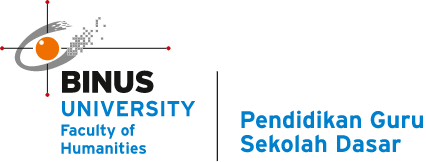Polya Problem-Solving: A Comprehensive Approach to Enhancing Mathematical Problem-Solving Skills
Introduction
Problem-solving is a crucial skill in mathematics education, enabling students to apply their knowledge and strategies to real-world situations. However, research has shown significant differences between expert problem-solvers and novices, with the former demonstrating more flexibility in applying acquired knowledge and strategies (Lee, 2016). Educators have explored various instructional strategies to bridge this gap, including the Polya problem-solving method. This article aims to provide a comprehensive overview of the Polya problem-solving method and its effectiveness in enhancing students’ mathematical problem-solving abilities.
The Polya Problem-Solving Method
The Polya problem-solving method, developed by George Polya, is a four-step approach that guides students through solving mathematical problems. The four steps include understanding the problem, devising a plan, carrying out the plan, and reflecting on the solution (Lee & Chen, 2015). Each step promotes critical thinking, logical reasoning, and metacognitive skills.
1. Understanding the Problem
The first step in the Polya problem-solving method is to understand the problem. This involves reading and analyzing the problem statement, identifying the given information, and determining the desired outcome. By carefully understanding the problem, students can develop a clear mental representation of the task, which is essential for devising an effective plan (Lee & Chen, 2015).
2. Devising a Plan
Once students clearly understand the problem, they move on to the second step, which is devising a plan. This step involves brainstorming possible strategies, selecting an appropriate approach, and breaking down the problem into manageable subtasks. By breaking down the problem, students can identify relevant concepts and apply appropriate mathematical techniques (Gopinath & Lertlit, 2022).
3. Carrying Out the Plan
After devising a plan, students proceed to the third step, carrying out the plan. This step involves executing the chosen strategy, performing calculations, and solving equations. During this step, students must demonstrate procedural fluency and accuracy to arrive at a correct solution (Sian et al., 2016).
4. Reflecting on the Solution
The final step in the Polya problem-solving method is reflecting on the solution. This step encourages students to evaluate their solutions, check for errors, and consider alternative approaches. Reflecting on the solution helps students develop metacognitive skills, such as self-monitoring and self-regulation, essential for becoming independent problem-solvers (Namgyal & Kongmanus, 2018).
Effectiveness of the Polya Problem-Solving Method
Numerous studies have investigated the effectiveness of the Polya problem-solving method in enhancing students’ mathematical problem-solving abilities. For example, Lee & Chen (2015) studied the effects of Polya questioning instruction for geometry reasoning in junior high school. The results showed that students who received instruction based on the Polya method demonstrated significantly improved geometry reasoning skills compared to those who received traditional instruction (Lee & Chen, 2015).
Similarly, Namgyal & Kongmanus (2018) examined the effectiveness of a mathematics instructional package incorporating Polya’s steps, including video clips, to enhance the problem-solving abilities of 6th-grade students in Bhutan. The findings revealed that students who received the instructional package significantly improved their problem-solving abilities compared to the control group (Namgyal & Kongmanus, 2018).
Furthermore, Gopinath & Lertlit (2022) implemented Polya’s model in solving mathematics problems by grade 7 students. The study found that incorporating Polya’s problem-solving method improved students’ beliefs about mathematics and mathematical problem-solving, suggesting that it can positively impact students’ attitudes towards mathematics (Gopinath & Lertlit, 2022).
Conclusion
The Polya problem-solving method is a valuable instructional approach that promotes critical thinking, logical reasoning, and metacognitive skills in students. By following the four-step process of understanding the problem, devising a plan, carrying out the plan, and reflecting on the solution, students can develop a systematic and practical approach to solving mathematical problems. The effectiveness of the Polya method has been supported by various studies, which have shown improvements in students’ problem-solving abilities and attitudes towards mathematics. Therefore, educators should consider incorporating the Polya problem-solving method into their instructional practices to enhance students’ mathematical problem-solving skills.
References:
- Lee, C. I. (2016). An appropriate prompts system based on the polya method for mathematical problem-solving. EURASIA Journal of Mathematics, Science and Technology Education, 13(3). https://doi.org/10.12973/eurasia.2017.00649a
- Lee, C. Y. and Chen, M. (2015). Effects of polya questioning instruction for geometry reasoning in junior high school. EURASIA Journal of Mathematics, Science and Technology Education, 11(6). https://doi.org/10.12973/eurasia.2015.1419a
- Gopinath, S. and Lertlit, S. (2022). The implementation of polya’s model in solving problem-questions in mathematics by grade 7 students. Suranaree Journal of Social Science, 11(1), 47-59. https://doi.org/10.55766/ffnz6417
- Sian, K. J., Shahrill, M., Yusof, N., Ling, G. C. L., & Roslan, R. (2016). Graphic organizer in action: solving secondary mathematics word problems. Journal on Mathematics Education, 7(2). https://doi.org/10.22342/jme.7.2.3546.83-90
- Namgyal, T. and Kongmanus, K. (2018). Effectiveness of a mathematics instructional package on pólya’s steps including video clips to enhance problem solving abilities of 6th grade students in bhutan. International Journal of Engineering &Amp; Technology, 7(4.38), 965. https://doi.org/10.14419/ijet.v7i4.38.27618



